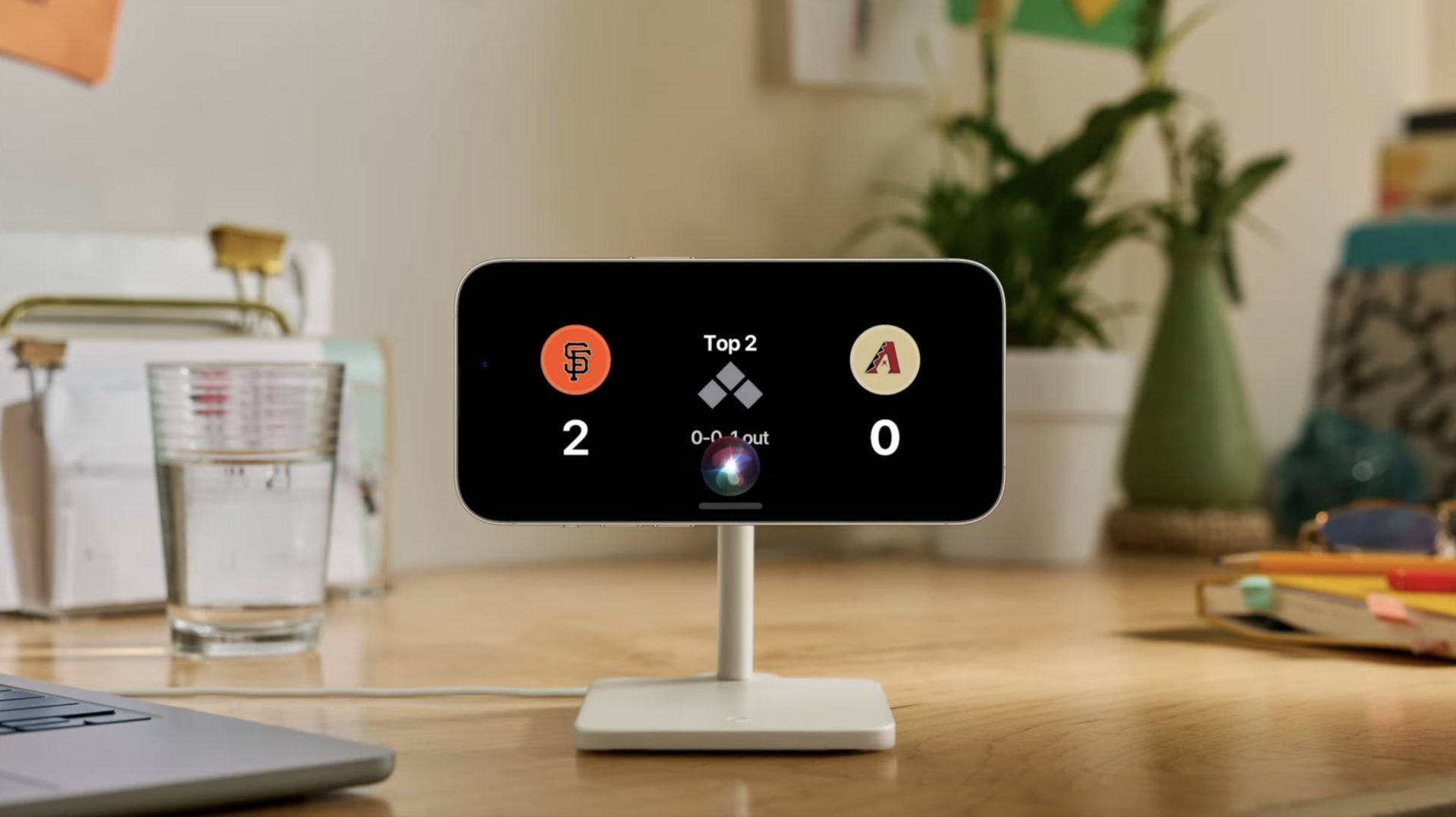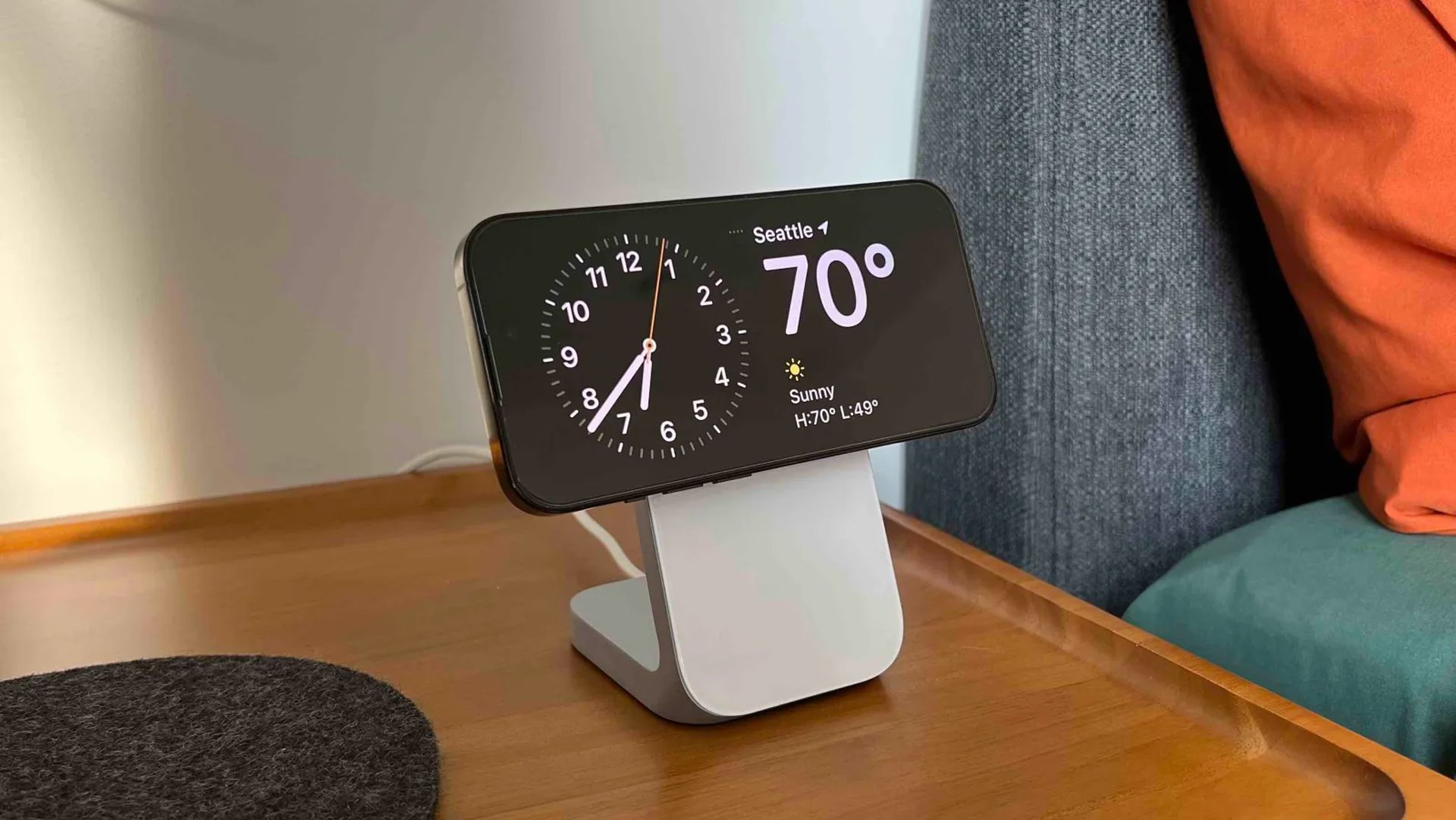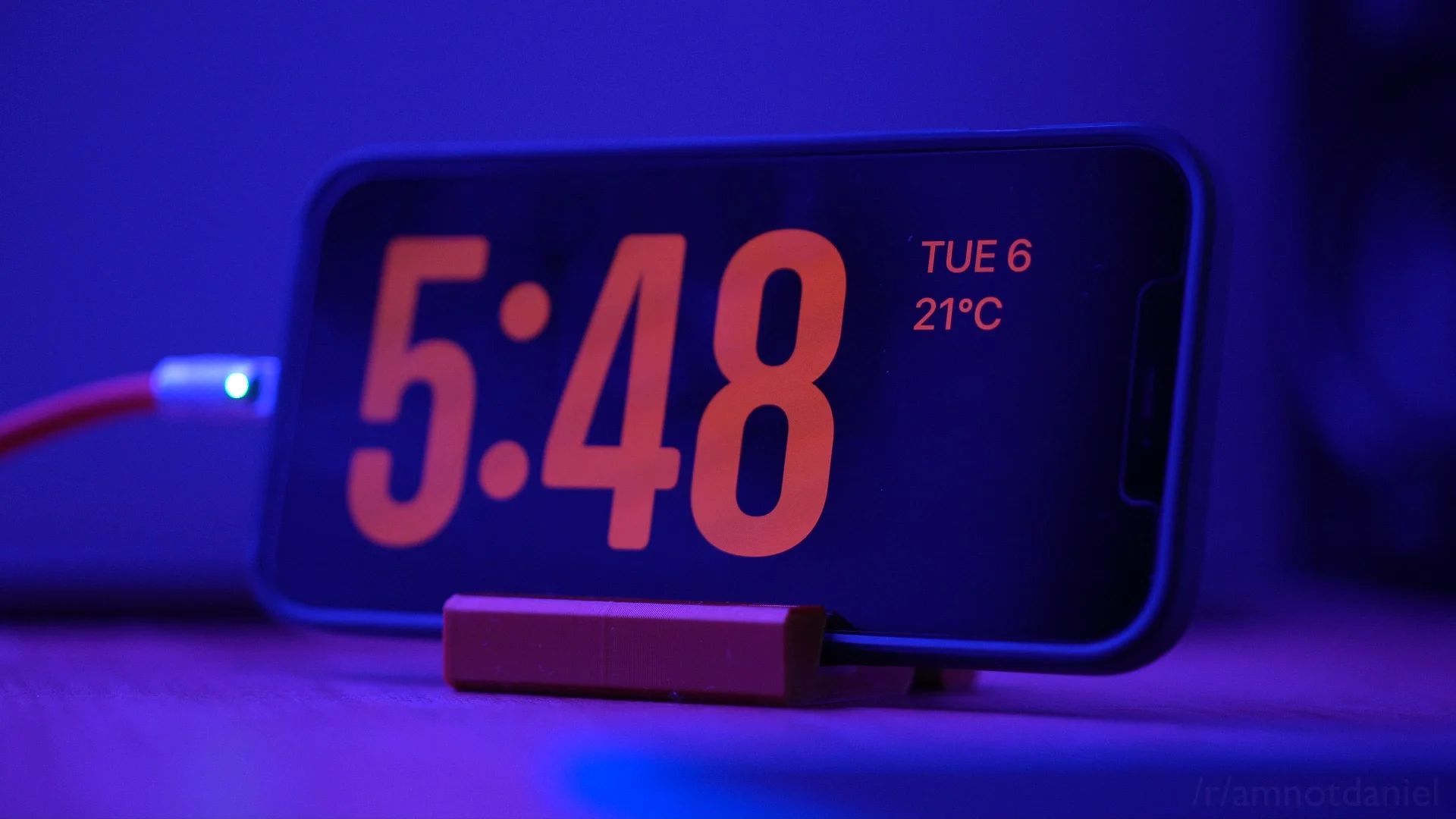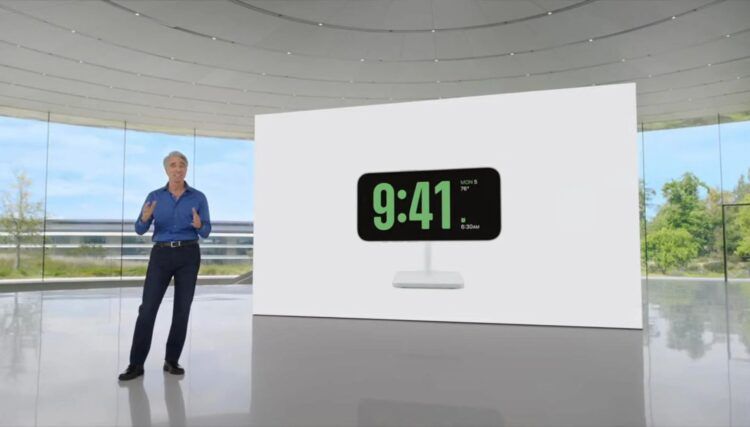With the release of iOS 17, iPhone StandBy Mode has undergone significant enhancements, revolutionizing the way users interact with their devices during periods of inactivity.
By activating StandBy Mode, you can effortlessly access various details such as the time, upcoming events, calendar, local weather, and more. Once your iPhone is placed in landscape mode while being charged, it will automatically enter StandBy Mode.
This feature proves especially useful when utilizing wireless charging nightstands or when you leave your iPhone idle during your daily routines. By swiping through the displayed widgets in StandBy Mode, you can effortlessly explore diverse information from different apps. However, you have the option to personalize and modify these widgets based on your preferences and the specific information you desire to regularly view. Here’s a guide on how you can edit and customize StandBy Mode according to your preferences in iOS 17.
iOS 17: iPhone StandBy mode explained
To access, utilize, and personalize the StandBy Mode, it is important to note that your device must be running iOS 17 or a more recent version. If you haven’t updated your device yet, you can navigate to Settings > General > Software Update to download and install the latest iOS update. After completing the update, you can proceed with the following steps to edit and customize the StandBy Mode on your iPhone.
How to enter the StandBy Mode on iOS 17?
To begin, activate the StandBy Mode on your iPhone. If you own a wireless charging stand, simply place your device on it in landscape mode. Alternatively, you can connect your iPhone to a wired charger and position it in landscape mode for a brief moment to enter the StandBy Mode. Once you are in the StandBy Mode, you can swipe and select the page you intend to modify. Swipe left to switch between different pages within the StandBy Mode.
How to edit the widgets Standby page?
By default, the Widgets Standby page is the initial page you see when entering the StandBy Mode. This page consists of several widgets for stock apps, but you have the flexibility to remove, replace, or customize them to suit your preferences. You can add multiple widgets to this page and even activate the smart rotate feature, which intelligently switches between widgets based on your previous usage. To personalize the Widgets Standby page on your iPhone, please refer to the following sections.

How to remove Widgets from the StandBy Mode widgets page?
To remove unwanted widgets from the Widgets StandBy page on your iPhone while in StandBy Mode, please follow these steps:
- Tap and hold on any widget stack within the StandBy Mode. Note: If you want to edit the left widget stack, tap and hold on it. For the right widget stack, tap and hold on it instead.
- Verify your identity. If you have an iPhone 13 or newer model, you can use Face ID for authentication. However, if you own an iPhone 12 or an older model, you will need to enter your passcode.
- Once unlocked, you will enter the editing mode. Locate the widget you want to remove and tap the minus (-) sign next to it.
- Confirm your choice by tapping “Remove.”
- Repeat the above steps if you wish to remove additional widgets from the StandBy Mode.
- When finished removing widgets, tap “Done” in the top right corner.
Please note that if you want to modify the widget stack on the left, you should tap and hold on it. Similarly, if you intend to edit the widget stack on the right, you should tap and hold on it as well.
How to add Widgets to the StandBy Mode widgets page?
To add widgets to the Widgets page in StandBy Mode, follow these steps:
- While in StandBy Mode, tap and hold on a widget to enter editing mode. To edit the left widget stack, tap and hold on a widget on the left side, or tap and hold on a widget on the right side to edit the right widget stack.
- Verify your identity by using your passcode for iPhone 12 and older models, or Face ID for iPhone 13 and newer models.
- Tap the plus (+) icon located in the top left corner to add widgets.
- From the left sidebar, select a widget category you prefer.
- If desired, you can tap “Other” to add widgets for apps that do not have optimized widgets for StandBy Mode, such as Fitness, Game Center, and Sleep widgets.
- As an example, let’s add a Music widget. Tap “Music.”
- The widget preview will appear on the right side. Tap “+ Add Widget” to add it to your StandBy Mode widget page.
- To rearrange the widgets, tap and drag the widget up or down within the widget stack.
- Repeat the above steps to add any additional widgets you wish to include on your StandBy Mode widgets page.
- Tap “Done” when you have finished adding widgets.

Smart Rotate explained
Smart Rotate is a feature in iOS that dynamically determines which widget to display in StandBy Mode based on your usage patterns, background activity, and recent updates. For instance, if there are significant weather changes in your area, the weather widget with the latest updates will be shown on the StandBy screen (if added). Similarly, if you have background music playing, the widget stack will automatically rotate to display the music widget for easy playback control. On the other hand, if there are no updates and you check your device at night while it’s charging, the clock widget will likely be displayed.
Smart Rotate works well with two smart stacks, where one stack can show real-time updates or ongoing background activity (like music), while the other can display upcoming events, reminders, dates, and more.
We recommend enabling Smart Rotate if you frequently use the widget page in StandBy Mode. It keeps you updated without the need to manually swipe through multiple widgets. However, if you prefer manual control and use only a few widgets, you can disable this feature.
To toggle Smart Rotate for a widget stack in StandBy Mode, follow these steps:
- Activate StandBy Mode on your iPhone and tap and hold on the widget stack for which you want to enable Smart Rotate. Remember, you can toggle Smart Rotate for each widget stack individually.
- Verify your identity using your passcode or Face ID, depending on your device.
- Once in editing mode, tap on “Smart Rotate” on the right side to enable or disable it, depending on its current status.
- Tap “Done” in the top right corner when you’re finished.
How to enable or disable Widget Suggestions on the StandBy Mode widgets page?
Widget Suggestions is a feature in iOS 17 that utilizes your usage patterns and Siri suggestions to display relevant widgets in each stack. This feature helps you stay updated with the latest information by showing widgets that you may not have manually added to your widget stack.
To enable or disable Widget Suggestions for a stack in StandBy Mode on your iPhone, follow these steps:
- Activate StandBy Mode on your iPhone and tap and hold on the stack for which you want to enable suggestions.
- Verify your identity using your passcode or Face ID.
- In the editing mode, tap on the “Widget Suggestions” option located on the right side to toggle it on or off, depending on your preference.
- Tap “Done” in the top right corner when you have finished.

How to edit the StandBy Mode Photos page?
When you swipe left in StandBy Mode, the next page you’ll see is the Photos page. It displays featured photos as a landscape background along with a minimal clock and today’s date. To view your photos on this page, your iPhone needs to be unlocked, and the phone will automatically switch between your featured photos.
However, if you don’t want all the photos chosen by your iPhone to be displayed on the lock screen, you can customize it by selecting a custom album or multiple albums instead. Here’s how you can do it on your iPhone:
- Create a new album for your lock screen if you haven’t already. Open the Photos app and tap “Albums” at the bottom.
- Tap the “+” icon in the top left corner.
- Select “New Album.”
- Provide a name for the new album and tap “Save.”
- Choose the photos you want to add to the album by tapping on them.
- Tap “Add” in the top right corner when you’re finished selecting photos.
- The album is now created. Close the Photos app and lock your iPhone. Place it in landscape mode while it’s charging to activate StandBy Mode.
- Swipe left on the widgets page to switch to the Photos page.
- Tap and hold on the page to enter editing mode.
- Tap the plus (+) icon in the top left corner.
- Swipe and tap on the album you recently created.
- The album will be added to the stack. By default, the featured album will be enabled. Tap the visibility icon in the top left corner to hide it if desired.
- If you want to add more albums, tap the plus icon to do so.
- Tap “Done” when you’re finished customizing.
- You can now swipe up or down to switch between the selected albums.

How to edit the dedicated StandBy Mode Clock page?
In StandBy Mode, there is a dedicated Clock page that displays a simple clock with the current time on your screen. This page is especially useful for nightstands, allowing you to easily check the time at any moment.
To customize the Clock page on your iPhone’s StandBy Mode, follow these steps:
- Swipe left on your StandBy Mode Widgets page twice to access the dedicated Clock page.
- Tap and hold on the Clock page to enter editing mode.
- Verify your identity using your device passcode or Face ID, depending on your device.
- Swipe up to reveal different clock options available. You can choose from the following choices: “Digital,” “Analog,” “World,” “Solar,” “Float.”
- Once you have selected your preferred clock style, tap the Picker icon to choose your desired color palette.
- Tap and select a color from the choices displayed at the bottom of your screen.
- Tap “Done” once you are satisfied with the appearance of your customized clock.
That’s how you can customize the Clock page in StandBy Mode on your iPhone running on iOS 17.
If you want to uncover all hidden gems of iOS 17, check out our latest guides:





